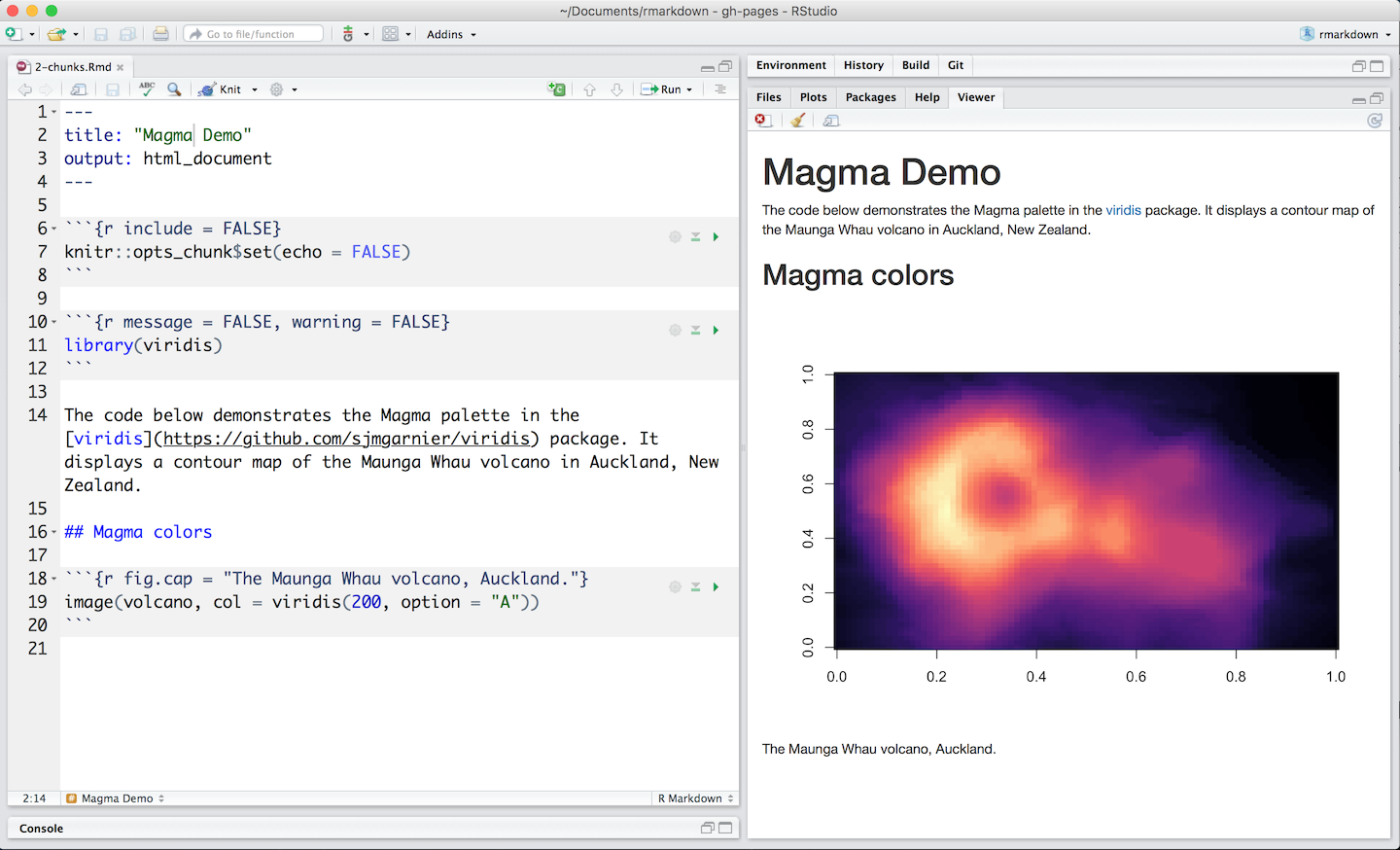Code Chunks
The R Markdown file below contains three code chunks. You can open it here in RStudio Cloud.

You can quickly insert chunks like these into your file with
- the keyboard shortcut Ctrl + Alt + I (OS X: Cmd + Option + I)
- the Add Chunk
 command in the editor toolbar
command in the editor toolbar
or by typing the chunk delimiters ```{r} and ```.
When you render your .Rmd file, R Markdown will run each code chunk and embed the results beneath the code chunk in your final report.
Chunk Options
Chunk output can be customized with knitr options, arguments set in the {} of a chunk header. Above, we use five arguments:
include = FALSEprevents code and results from appearing in the finished file. R Markdown still runs the code in the chunk, and the results can be used by other chunks.echo = FALSEprevents code, but not the results from appearing in the finished file. This is a useful way to embed figures.message = FALSEprevents messages that are generated by code from appearing in the finished file.warning = FALSEprevents warnings that are generated by code from appearing in the finished.fig.cap = "..."adds a caption to graphical results.
See the R Markdown Reference Guide for a complete list of knitr chunk options.
Global Options
To set global options that apply to every chunk in your file, call knitr::opts_chunk$set in a code chunk. Knitr will treat each option that you pass to knitr::opts_chunk$set as a global default that can be overwritten in individual chunk headers.
Caching
If document rendering becomes time consuming due to long computations you can use knitr caching to improve performance. Knitr chunk and package options describes how caching works and the Cache examples provide additional details.